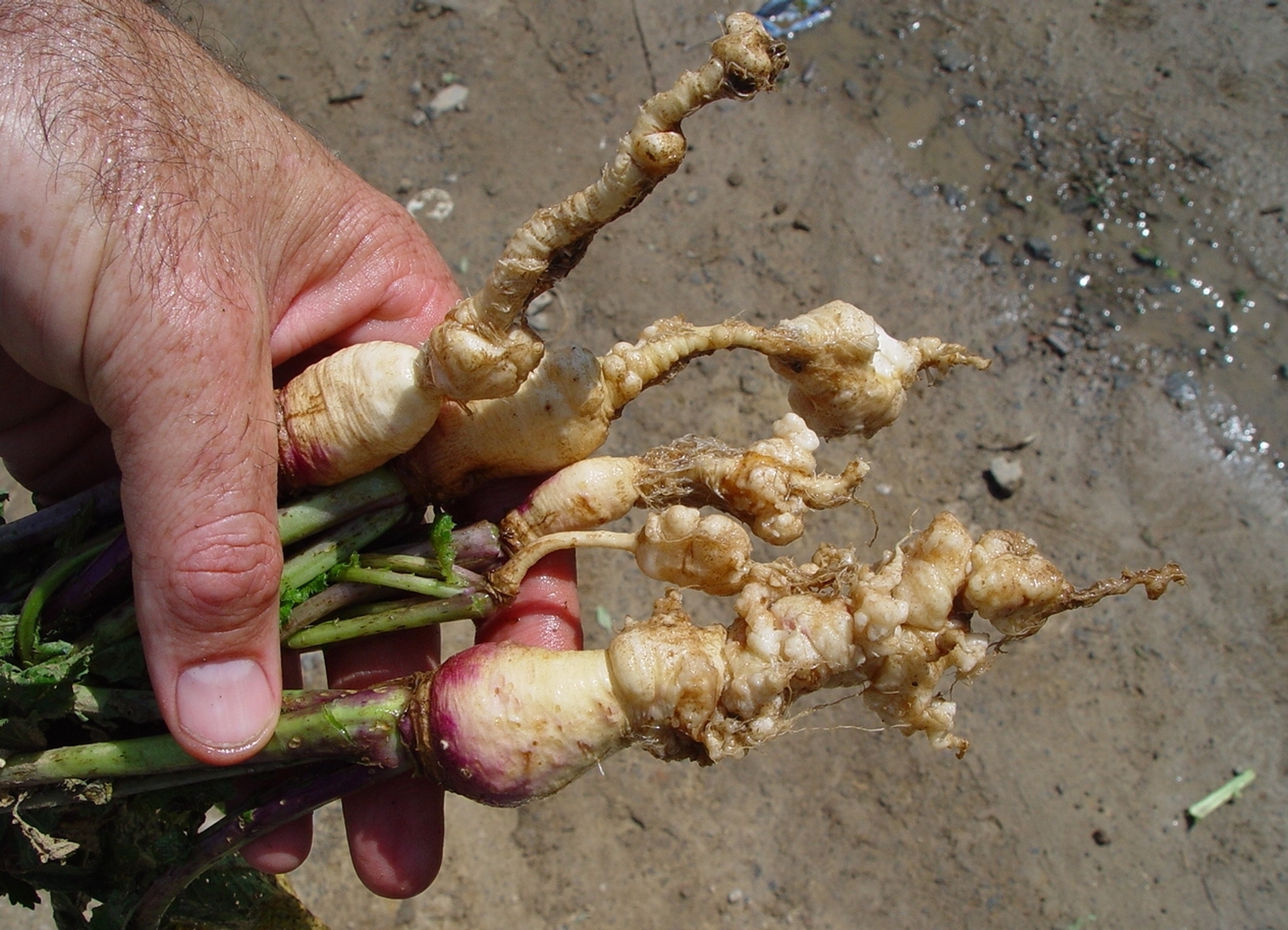

Clubroot can affect the roots of brassica crops and the soil surrounding them, severely reducing the growth and yield the crop, which in severe cases my die off.
Symptoms
The first signs are stunted growth above ground, purplish foliage and excessive wilting in hot weather, while below ground, the root system becomes swollen and distorted, with a loss of finer roots.
How is Clubroot transmitted?
Clubroot spores can be moved around from one field to another in many ways: via machinery, people, livestock and water. The spores can be transported long and short distances through floodwaters and surface runoff caused by rain or irrigation water. They can also be transmitted by footwear, by machinery carrying loose soil and by livestock which can carry spores on their bodies.
So what can be done to help guard against the spread of clubroot?
If you know a field is infected, then a cleaning system needs to be put in place to remove spores from footwear and clothes. To prevent livestock spreading the spores, you could either keep them off infected land completely or keep the same animals grazing on the same area. Before moving the animals from the infected land you would need to wash them down,containing the spread of the water being used. Little can be done to stop clubroot spreading by natural sources such as water.
Life cycle of clubroot spores
Clubroot is caused by the pathogen plasmodiophora brassicae. This is an obligate parasite, meaning it cannot grow and multiply without a living host. If a host plant is not present, the pathogen survives in the soil as dormant, resting spores. Secretions from the growing roots of the host plant, such as a brassica crop, simulate the resting spores to germinate and produce short-lived zoospores.
Zoospores have small tails that allow them to swim towards the host plant and infect the root through the root hairs. The zoospores then multiply to form a plasmodium. This is invisible to the naked eye and there are no visible changes to the root at this stage. The plasmodium splits and forms secondary zoospores and these infect the host, invading the root cortex. Once the root cortex has been infected a secondary plasmodium is produced, altering the hormones within the host plant. The infected roots eventually swell and form clubs, which are visible 4 to 6 weeks after planting.
After the plasmodia mature, they divide into millions of long-lived resting spores, which can last for up to twenty years. These spores are released into the soil as the clubs decompose, repeating the cycle with the next host crop.
While some varieties of brassica crops are bred to have a higher resistance to clubroot than others, if you do have active or dormant spores in a field, the advice is not to grow brassica crops in this soil for long periods, up to twenty years, until the spores have been given time to die off.
Photo Credit: G.J. Holmes
Date Posted: 24th September 2019



